This fully automated M&M’s-launching machine delivers chocolate on voice command, wherever you are in the room.
A quick lesson in physics
To get our head around Harrison McIntyre‘s project, first we need to understand parabolas. Harrison explains: “If we ignore air resistance, a parabola can be defined as the arc an object describes when launching through space. The shape of a parabolic arc is determined by three variables: the object’s departure angle; initial velocity; and acceleration due to gravity.”
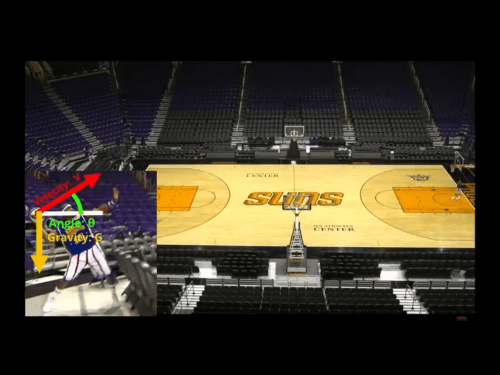
Harrison uses a basketball shooter to illustrate parabolas
Lucky for us, gravity is always the same, so you really only have to worry about angle and velocity. You could also get away with only changing one variable and still be able to determine where a launched object will land. But adjusting both the angle and the velocity grants much greater precision, which is why Harrison’s machine controls both exit angle and velocity of the M&M’s.
Kit list
The M&M’s launcher comprises:
- 2 Arduino Nanos
- 1 Raspberry Pi 3
- 3 servo motors
- 2 motor drivers
- 1 DC motor
- 1 Hall effect limit switch
- 2 voltage converters
- 1 USB camera
- “Lots” of 3D printed parts
- 1 Amazon Echo Dot
A cordless drill battery is the primary power source.
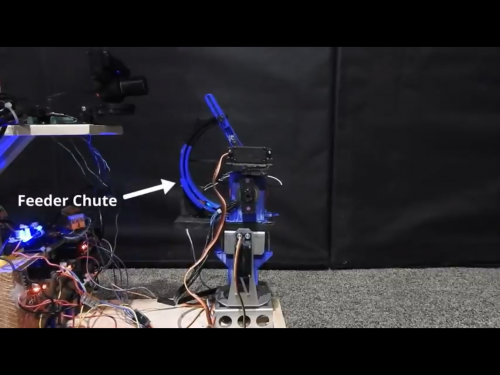
The project relies on similar principles as a baseball pitching machine. A compliant wheel is attached to a shaft sitting a few millimetres above a feeder chute that can hold up to ten M&M’s. To launch an M&M’s piece, the machine spins up the shaft to around 1500 rpm, pushes an M&M’s piece into the wheel using a servo, and whoosh, your M&M’s piece takes flight.
Controlling velocity, angle and direction
To measure the velocity of the fly wheel in the machine, Harrison installed a Hall effect magnetic limit switch, which gets triggered every time it is near a magnet.
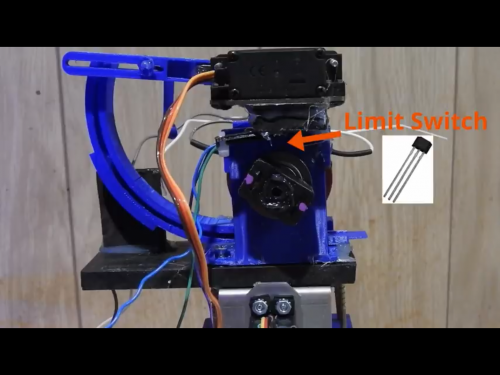
Two magnets were placed on opposite sides of the shaft, and these pass by the switch. By counting the time in between each pulse from the limit switch, the launcher determines how fast the fly wheel is spinning. In response, the microcontroller adjusts the motor output until the encoder reports the desired rpm. This is how the machine controls the speed at which the M&M’s pieces are fired.
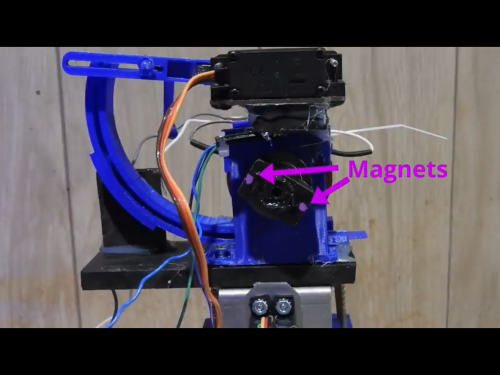
Now, to control the angle at which the M&M’s pieces fly out of the machine, Harrison mounted the fly wheel assembly onto a turret with two degrees of freedom, driven by servos. The turret controls the angle at which the sweets are ‘pitched’, as well as the direction of the ‘pitch’.
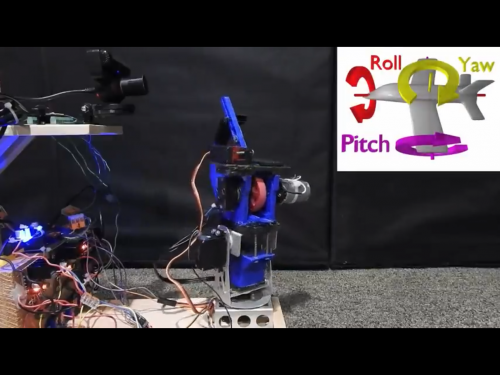
So how does it know where I am?
With the angle, velocity, and direction at which the M&M’s pieces fly out of the machine taken care of, the last thing to determine is the expectant snack-eater’s location. For this, Harrison harnessed vision processing.
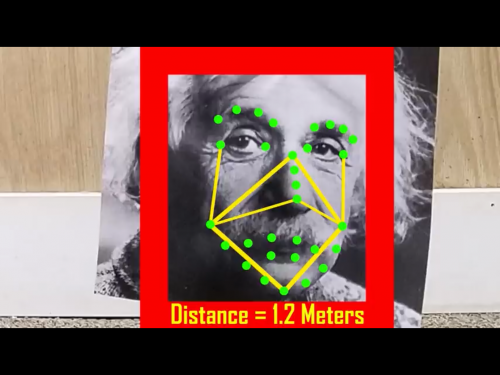
Harrison used a USB camera and a Python script running on Raspberry Pi 3 to determine when a human face comes into view of the machine, and to calculate how far away it is. The turret then rotates towards the face, the appropriate parabola is calculated, and an M&M’s piece is fired at the right angle and velocity to reach your mouth. Harrison even added facial recognition functionality so the machine only fires M&M’s pieces at his face. No one is stealing this guy’s candy!
So what’s Alexa for?
This project is topped off with a voice-activation element, courtesy of an Amazon Echo Dot, and a Python library called Sinric. This allowed Harrison to disguise his Raspberry Pi as a smart TV named ‘Chocolate’ and command Alexa to “increase the volume of ‘Chocolate’ by two” in order to get his machine to fire two M&M’s pieces at him.
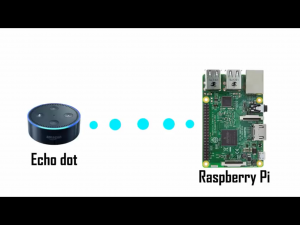

Drawbacks
In his video, Harrison explaining that other snack-launching machines involve a spring-loaded throwing mechanism, which doesn’t let you determine the snack’s exit velocity. That means you have less control over how fast your snack goes and where it lands. The only drawback to Harrison’s model? His machine needs objects that are uniform in shape and size, which means no oddly shaped peanut M&M’s pieces for him.
He’s created quite the monster here, in that at first, the machine’s maximum firing speed was 40 mph. And no one wants crispy-shelled chocolate firing at their face at that speed. To keep his teeth safe, Harrison switched out the original motor for one with a lower rpm, which reduced the maximum exit velocity to a much more sensible 23 mph… Please make sure you test your own snack-firing machine outdoors before aiming it at someone’s face.
Go subscribe
Check out the end of Harrison’s videos for some more testing to see what his machine was capable of: he takes out an entire toy army and a LEGO Star Wars squad by firing M&M’s pieces at them. And remember to subscribe to his channel and like the video if you enjoyed what you saw, because that’s just a nice thing to do.
Website: LINK
